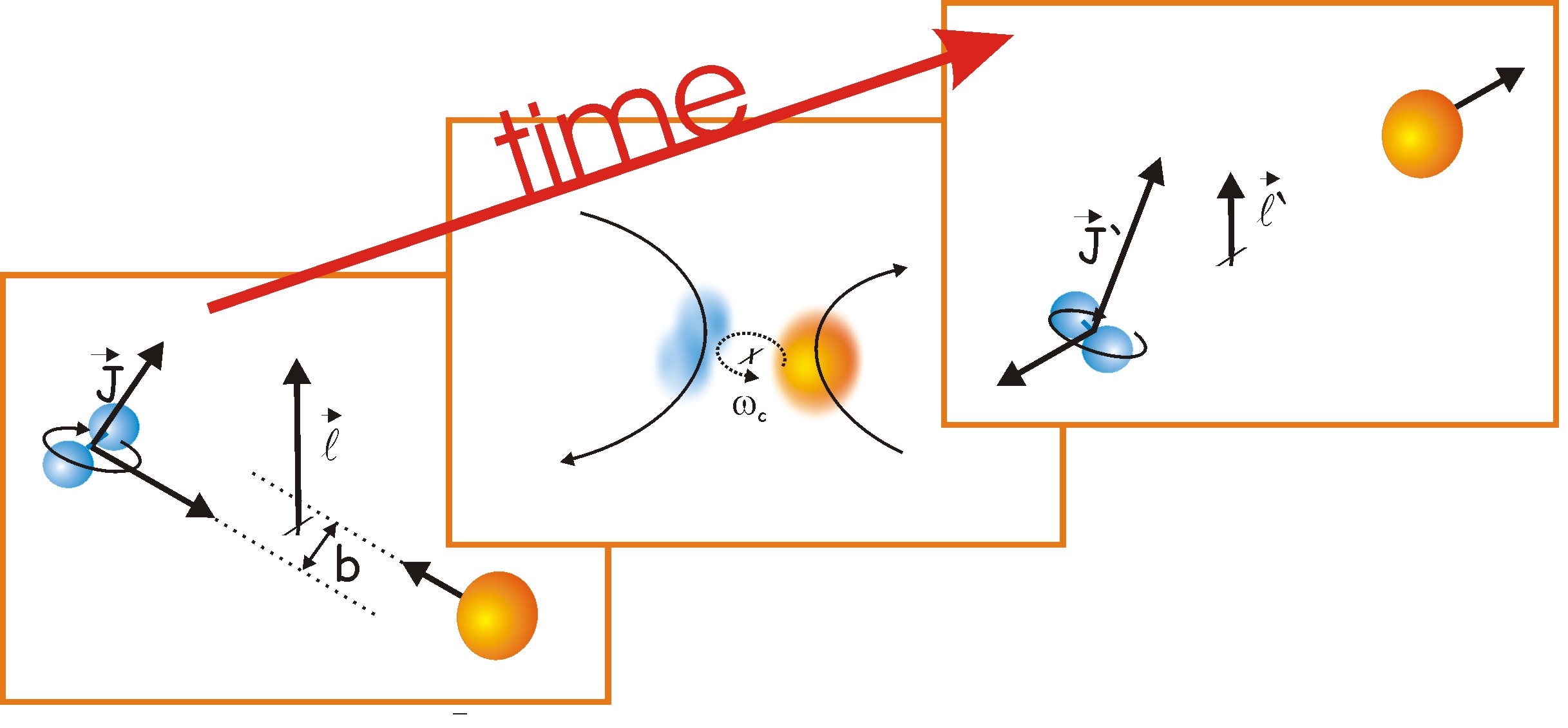| |
Energy transfer
in rotationally inelastic collisions: a new scaling law based on time-energy
uncertainty
The
dynamics underlying the collision process can experimentally only be
determined to an accuracy given by Heisenberg´s time-energy uncertainty.
Based on this assumption an effective angular momentum parameter lc
= 2 ћ
is derived that limits the possible amount
of angular momentum transferred during a restricted interaction time
[1,2]. This angular momentum transfer limit together with a competing
energy gap term [3] is incorporated into the ECS theory [4] yielding
a new scaling model for rotationally inelastic collisions: The Angular
Momentum and Energy Corrected Sudden Approximation (AECS).

The
AECS model is experimentally verified using time-resolved coherent anti-Stokes
Raman spectroscopy (fs-CARS). We have investigated rotational
energy transfer (RET) in N2 induced by collisions with He, Ne, N2, Ar
and Kr, and additionally CO-CO as well as C2H2-C2H2 collisions.
In all cases the experimental results are in excellent agreement with the AECS model
(see Figures below). An central feature of the AECS scaling is the limitation
of the number of free parameters to two in contrast to typically four
or five in common ECS models using energy gap laws.
Figure: Left: Simulated transients using the ECS-P,
ECS-E [6] and AECS models, respectively. At 5 bar significant
deviations of the three models are found. Right:Experimental
fs-CARS transients (symbols) obtained at room temperature for N2 (500
mbar) colliding with rare gases (~ 4 bar). The transients obtained
with the AECS model (solid lines) closely fit the experimental data
Figure: Linewidth data (symbols) for N2-N2 collisions between
295 and 1500 K are reported in Ref. [5]. The solid lines calculated
with AECS and the model parameters obtained at room temperature with
fs-CARS are in good agreement.
[1] P. Beaud and G. Knopp, Chem. Phys. Lett. 371 (2003) 194.
[2] G. Knopp, P. Radi, M. Tulej, T. Gerber and P. Beaud, J. Chem. Phys. ,118 (2003) 8223.
[3] P. Beaud, T. Gerber, P. Radi, M. Tulej, and G. Knopp, Chem. Phys. Lett., 373 (2003) 251.
[4] A.E. DePristo, S.D. Augustin, R. Ramaswamy, and H. Rabitz, J. Chem.
Phys. 71 (1979) 850.
[5] L.A. Rahn and R.E. Palmer, J. Opt. Soc. Am. B 3 (1986) 1164.
[6] L. Bonamy and J.V. Buldyreva, Phys. Rev. A 63 (2000) 012715.
| |
.
|
